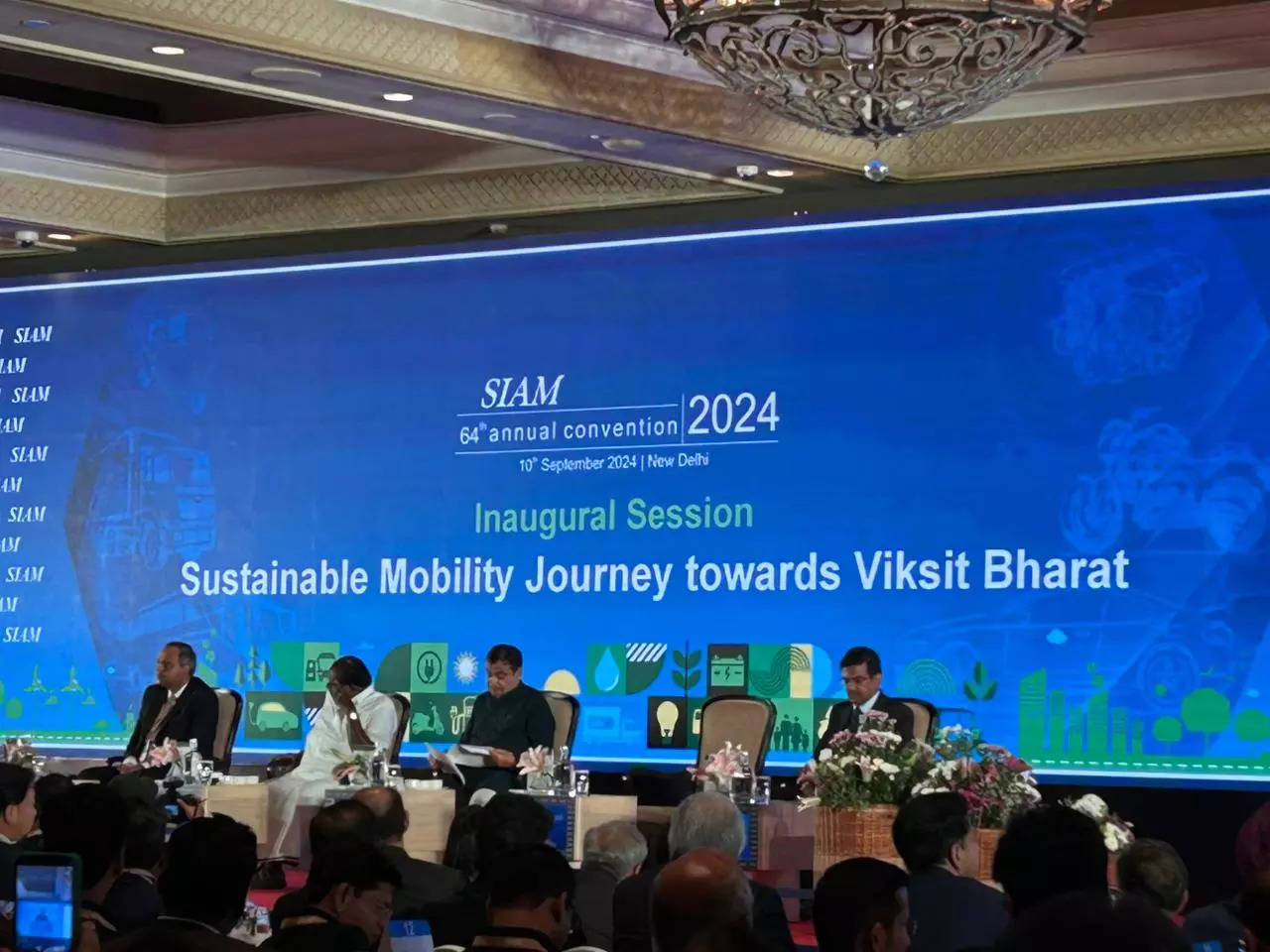
New Delhi: The government is nudging the automobile industry to increase investments manifold in products and technologies needed for India achieving its sustainable development goals. The expectations from the industry encompass investments in flex fuel vehicles, in vehicles which can run on green hydrogen and LNG, in setting up scrapping and fitness centres and even in offering better financial incentives for consumers to scrap old vehicles than those which are currently on offer.
Is a disproportionate burden being placed on the industry when compared to the government’s own role in furthering the sustainable agenda? This is a question which no industry captain is willing to address on record, though some do indicate that the expectations from automobile companies are rather high.
A senior industry official pointed out that the government’s push for flex-fuel vehicles, for example, was welcome but occasional statements by senior ministers about the need to have even 100% ethanol to power vehicles was “a little disconcerting. Blending of ethanol cannot be over 85%”. This person also said that flex fuel vehicle development was happening but there were still fuel supply bottlenecks for such vehicles and unless these were fixed, the speed of development and adoption would not be fast.
SIAM President Vinod Aggarwal, who is also the MD of VE Commercial Vehicles, said that his company has piloted some trucks in Nagpur which operate on LNG and there were only four pumps where LNG was available at the moment in the city.
Aggarwal’s comments came just after the Minister for Road Transport and Highways, Nitin Gadkari’s assertion that LNG was “also a good alternative (to diesel/petrol) and that truck markers should launch more LNG trucks.”
The minister said that LNG trucks have several advantages: they can run for 1400 km on a full tank, generate INR 12 lakh savings per year for fleet operators and the vehicle’s cost can be recovered in two years. He also promised more LNG pumps.
In his address, the minister not only sought more LNG trucks from the industry, he also exhorted vehicle OEMs to build scrappage centres (in addition to those being operated by the government), vehicle fitness centres, develop more products on flex fuel and, if possible, increase the discounts the industry has recently agreed to offer to consumers for scrapping old vehicles.
“The 3% discount for new vehicles in case of scrappage of old vehicles, which SIAM has agreed to, is very thoughtful…but 3% is not the maximum, it is the minimum…you can offer more but I will not insist,” Gadkari said, tongue firmly in cheek.
He said that Germany had seen a 12% increase in vehicle sales after scrappage policy was applied in that country while sales in the USA rose by 15% due to vehicle scrapping. “India has three crore unfit vehicles…By scrapping, component costs will be reduced by 30-40% while 90% of the product can be recycled.”
An industry executive said that while in percentage terms, the discount on offer for vehicle scrapping seemed minuscule, “a lot of people are focused on discounts for buying new cars but the real focus of the scrappage policy has to be commercial vehicle category. And 3% is quite a large amount for CVs”.
During his speech, Gadkari also spoke about India soon having the ability to export lithium-ion batteries, the rechargeable batteries used on electric vehicles. “A lot of companies – Adani, Tata, Maruti, LG, Samsung – they are all entering battery manufacturing and India will be in a position to export soon”.
The good news on the Li-ion battery front follows “encouraging” growth in EV sales, the minister said, while predicting total EV sales to reach one crore units by 2030 and the market for EV finance at INR 5 lakh crore by then.
Kumaraswamy highlights PLI scheme
Gadkari didn’t let the industry forget the role the government is playing in making it profitable as he pointed out that “you make profits because we are making good roads”. The minister of heavy industries and steel, H D Kumaraswamy, said during the same session that the government was doing its bit through several schemes – the auto and auto component PLI (production linked incentive) scheme, the different schemes for offering purchase subsidy on electric vehicles and also a policy to promote manufacturing of EVs locally by offering hefty import concessions.
In the PLI scheme which the minister mentioned, while the scale of investment already committed is commendable, there has been no disbursement of actual subsidies till date. In the schemes (FAME and EMPS) for subsidising purchase of EVs, the uncertainty over subsidies going forward and the scheme’s focus has kept the industry on tenterhooks. And in the case of encouraging local manufacturing of EVs through the import concession route, not a single applicant has come forward so far.
Meanwhile, Aggarwal – who is also the president of SIAM – promised that the entire automobile fraternity was working in tandem with stakeholders to help India meet its sustainable goals. He said that there has been a 90% growth in the sales of passenger electric vehicles and 30% in electric two wheelers last fiscal while production of vehicles which can run on 20% ethanol blending has also begun. Work has also started on manufacturing hydrogen vehicles.

